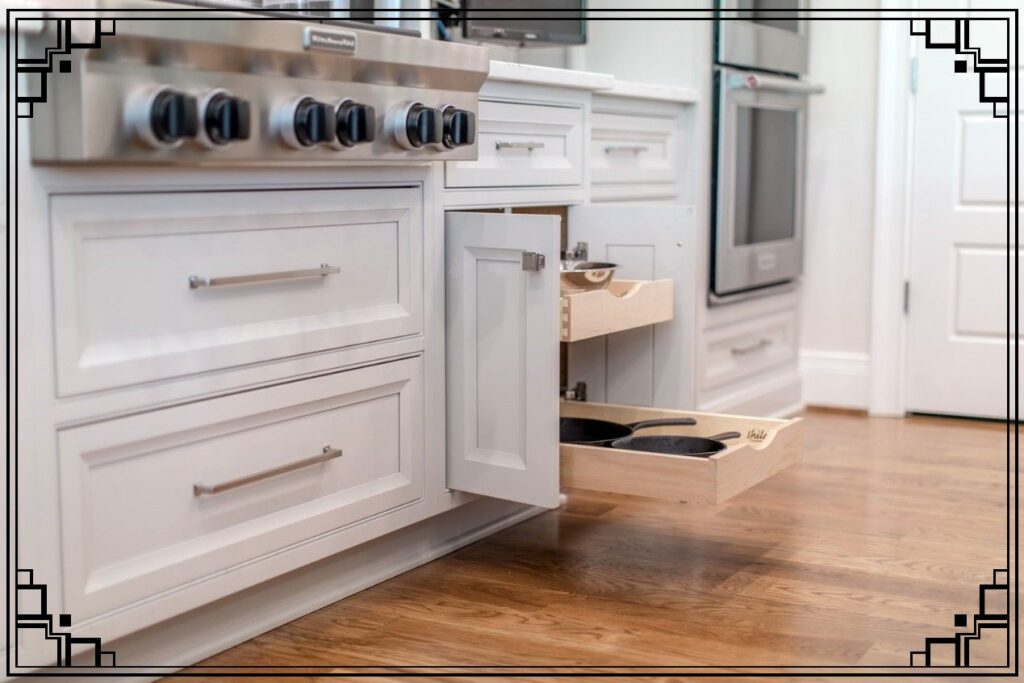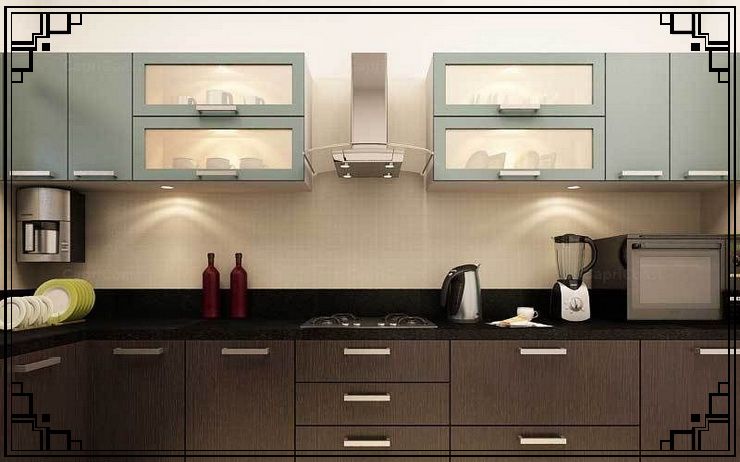Modular kitchen cabinet materials can help in creating your perfect kitchen. Ampquartz understands that choosing the right modular kitchen cabinet material is crucial. It impacts not just the functionality but also the aesthetics of your entire home.
Many new homeowners underestimate the importance of cabinet materials. They might think all materials are created equal, leading to potential regrets down the line.
@ampquartzcabinets Memang mantaplah Vertical Storage ni! Carilah AmpQuartz kalau korang nak buat smart storage system~ AmpQuartz Storage SmartStorage Kitchen Dapur
♬ original sound – AmpQuartz – AmpQuartz
This guide dives deep into the 6 best materials for modular kitchen cabinets in 2024. We'll help you find the perfect balance of style, durability, and affordability to create your dream kitchen!
If you are one of them, feel free to spend some time reading this post and find out the ideal modular kitchen cabinet materials on the market, and pick the perfect one to make your modular kitchen appear great and fashionable! As usual, the Ampquartz team is pleased to have you share your opinions in the comment section below. Together, we can explore how these modular kitchen cabinet materials will improve your house's entire environment.
Kitchen Cabinet Materials 1: The Timeless Appeal of Wood: A Classic Choice for Kitchen Cabinets

Solid wood reigns supreme for many homeowners and designers. This natural material brings timeless elegance, effortlessly complementing various kitchen styles. It boasts superior durability, lasting for years and offering refinishing potential for future updates.
However, solid wood comes at a cost. Prices can vary depending on the wood type, with exotics commanding a premium. Additionally, it's susceptible to warping or cracking in extreme temperatures or humidity. Proper ventilation is crucial.
Despite the cost and maintenance considerations, solid wood cabinets are an excellent investment for those prioritizing aesthetics, durability, and a timeless design.
Kitchen Cabinet Materials 2: Demystifying Fibreboard: A Budget-Friendly Option for Kitchen Cabinets

Fiberboard, also known as Medium-Density Fiberboard (MDF), is a popular pick for budget-conscious homeowners. It's a more affordable option compared to solid wood and can support your appliances on top.
However, MDF does have some drawbacks. It's generally less durable than solid wood and may not be as strong as plywood. As the saying goes, “you get what you pay for.” Despite these limitations, MDF remains a cost-effective choice for many.
Kitchen Cabinet Materials 3: Plywood Power: Building Blocks for a Lasting Kitchen
Plywood is a favorite among interior designers and homeowners for good reason. This versatile material boasts exceptional resistance to heat, moisture, and warping. Imagine simmering a pot of stew without fear of steam damaging your cabinets. Or picture confidently storing your heavy cast iron skillet on top, knowing the plywood won't sag under the weight.
Beyond its impressive strength, plywood offers additional benefits. Its layered construction provides excellent stability, minimizing the risk of warping or cracking over time. This makes it a great choice for areas with fluctuating temperatures or humidity. Plus, plywood offers a smooth surface that can be finished in a variety of styles to match your kitchen's aesthetic.
However, the exceptional strength and versatility of plywood come at a cost. It's generally more expensive than MDF or fiberboard. But for those who prioritize long-lasting durability and a time.
Kitchen Cabinet Materials 4: Unveiling Laminates: Style & Versatility for Your Kitchen Cabinets
Laminate is a popular choice for homeowners seeking both style and affordability. These cabinets feature a durable plastic layer or other protective finish, making them ideal for those who prioritize a long-lasting appearance.
Laminate truly shines in its variety. You'll find a wide range of eye-catching colors and patterns to perfectly match your desired kitchen aesthetic. Plus, they're both heat and moisture resistant, making them a practical choice for any kitchen environment.
The best part? Laminate cabinets are budget-friendly. This combination of affordability, style, and durability makes laminate a compelling option for many homeowners.
Kitchen Cabinet Materials 5: Exploring the Elegance of Membrane Kitchen Cabinets

Membrane finishes are making a splash in kitchens! This innovative material offers both beauty and practicality. Its PVC coating provides superior strength, ideal for busy households where cabinets endure daily wear and tear. Plus, the smooth, seamless surface makes cleaning a breeze – a win for maintaining a sleek and stylish kitchen.
However, membrane finishes do have a trade-off. While easy to wipe clean, the smooth surface can reveal dust and fingerprints more readily compared to textured materials. If you have a particularly busy lifestyle and frequent cleaning might be a challenge, another cabinet material with a less revealing texture might be a better fit.
Kitchen Cabinet Materials 6: Discover Polyurethane Kitchen Cabinets: A Balance of Beauty & Durability
Polyurethane (PU) cabinets are a dream come true for design enthusiasts seeking timeless elegance. Their durable finish boasts exceptional resistance to scratches, chips, and fading, ensuring your cabinets retain their beauty for years. Plus, PU offers a wide variety of colors and finishes, allowing you to personalize your kitchen to match any design style.
Beyond aesthetics, PU shines in functionality. The easy-to-clean surface makes maintenance a breeze. Unlike some materials, PU resists moisture and stains, making it ideal for areas near sinks and dishwashers.
However, PU's luxurious appeal comes at a price. It's one of the most expensive materials on the market. Weigh the investment against your budget and desired look before making your final decision. For those seeking a more budget-friendly option with similar aesthetics, laminate cabinets might be a good alternative.
PU requires minimal maintenance. Regular wiping with a damp cloth keeps them looking their best. Avoid harsh chemicals or abrasive cleaners, which can damage the finish.
@ampquartzcabinets Belilah Custom Kitchen Cabinet~ AmpQuartz KitchenCabinet CustomKitchenCabinet SmartStorage SoftClosedHinge
♬ original sound – AmpQuartz – AmpQuartz






